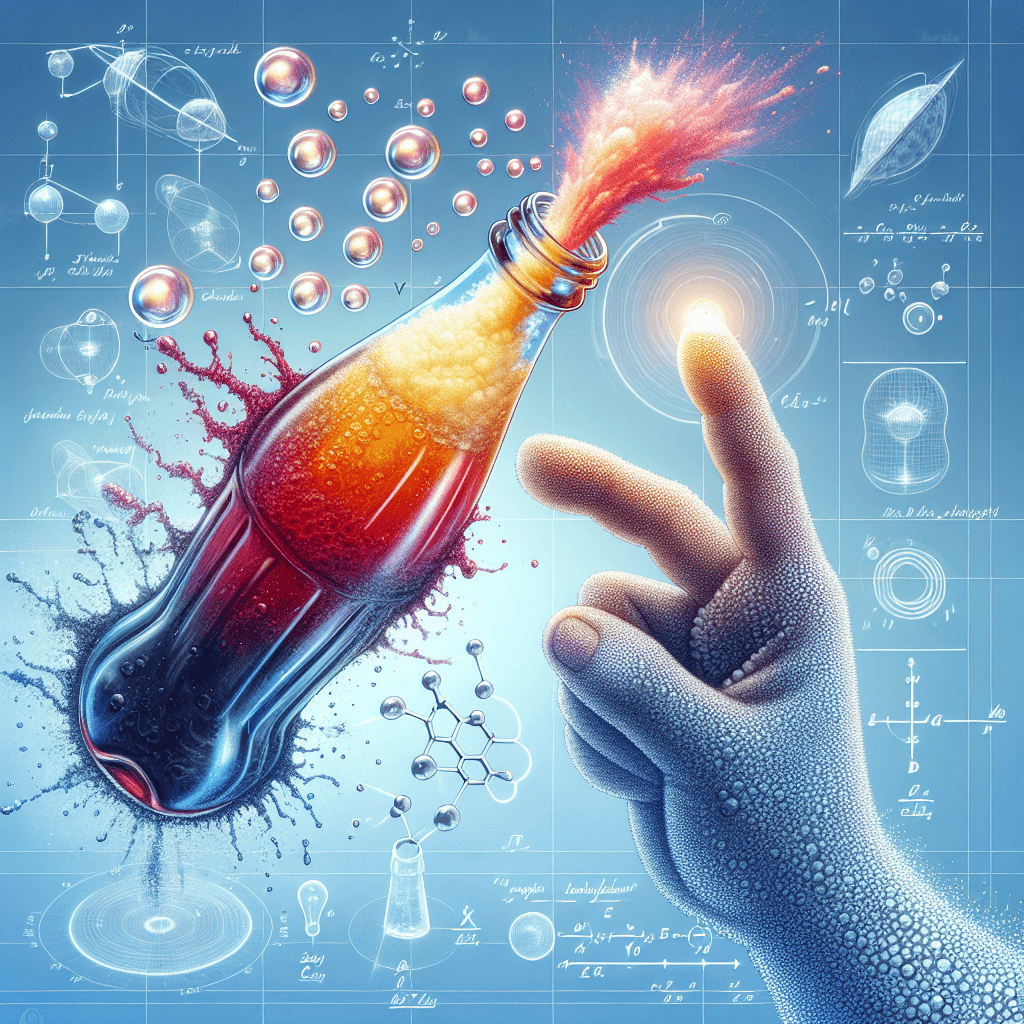Why can tapping a fizzy drink bottle instantly trigger a foam eruption
It's not about releasing pressure—it's about unleashing a hidden army of microscopic bubbles. Discover the surprising chain reaction you trigger that turns a calm drink into a chaotic foam volcano.


Too Long; Didn't Read
Tapping a fizzy drink sends a shockwave through the liquid, creating thousands of tiny bubbles. The trapped CO2 gas rushes into all these new bubbles at once, causing a rapid foam eruption.
The Science of Soda: Why Can Tapping a Fizzy Drink Bottle Instantly Trigger a Foam Eruption?
We’ve all seen the classic prank: someone vigorously shakes a bottle of soda and hands it to an unsuspecting friend. The result is a sticky, foamy mess. But what about the lesser-known, yet equally dramatic, phenomenon? A shaken bottle can sit perfectly still, looking innocent, until a sharp tap on its side instantly unleashes a geyser. This isn't magic; it's a fascinating display of physics and chemistry at work. Understanding why this happens reveals the delicate balance of pressure and gas trapped inside every carbonated beverage. This post will break down the science of carbonation, explore the role of nucleation, and explain exactly why a simple tap can trigger a fizzy volcano.
The Carbonation Conundrum: Gas Under Pressure
Before we can understand the eruption, we need to look at what's happening inside a calm, unopened bottle of soda. That signature fizz comes from dissolved carbon dioxide (CO2).
During production, beverage makers force a large amount of CO2 gas into the liquid under very high pressure. According to a scientific principle known as Henry's Law, the higher the pressure, the more gas can be dissolved into a liquid. Inside the sealed bottle, this system is in a stable equilibrium. Most of the CO2 is invisibly dissolved in the drink, while a small amount exists as gas in the headspace between the liquid and the cap, maintaining the internal pressure. As long as the bottle remains sealed and undisturbed, the CO2 is content to stay dissolved.
Shaking Things Up: Priming the Bottle for Eruption
Shaking a fizzy drink bottle is the crucial first step in setting the stage for an explosion. When you shake the bottle, you are violently mixing the gas from the headspace into the liquid. This action does two critical things:
- It breaks the large gas pocket in the headspace into countless microscopic bubbles.
- It forces these tiny microbubbles to stick to the inner walls of the bottle, where tiny imperfections (called crevices) help hold them in place.
At this point, the bottle is a ticking time bomb. These newly formed microbubbles are highly unstable and want to expand, but the immense pressure inside the sealed container keeps them microscopic and trapped against the bottle's sides. The potential energy for a foam-over is now stored and waiting for a trigger.
The Tap that Triggers: A Shockwave of Foam
This is where the tap comes in. Tapping the side or bottom of a shaken bottle sends a powerful pressure wave, or shockwave, through the liquid. This wave is strong enough to dislodge the thousands of tiny, unstable microbubbles clinging to the walls.
Once freed, these bubbles begin to rise toward the surface. As they travel upward, the pressure from the liquid above them decreases, allowing them to expand. This is where the chain reaction, a process known as cavitation and nucleation, begins.
- Nucleation Sites: Each of these rising, expanding microbubbles acts as a perfect "nucleation site."
- Chain Reaction: The dissolved CO2 in the surrounding liquid, which was previously stable, is suddenly drawn to these nucleation sites. It rapidly escapes its dissolved state to join the bubble, causing it to grow exponentially.
- The Eruption: One bubble growing triggers others, leading to a runaway effect. This explosive formation of gas displaces the liquid, forcing it up and out of the bottle in the form of a massive foam eruption the moment you open the cap and release the pressure.
Interestingly, this is the opposite of the common wisdom to tap the top of a dropped can to prevent a fizz-over. In that case, the gentle tapping helps the microbubbles detach and rise to the headspace before you open it, allowing the system to stabilize. A sharp tap on the side of a shaken bottle, however, does the exact opposite, initiating the fizzy chaos.
Conclusion
The spectacular eruption from a tapped soda bottle is more than just a party trick; it's a perfect, everyday demonstration of complex physics. It begins with CO2 forced into a liquid under high pressure. Shaking introduces unstable microbubbles, priming the explosive potential. Finally, a sharp tap provides the physical shock needed to release these bubbles, turning them into nucleation sites that trigger a massive, rapid chain reaction of foam. So, the next time you handle a fizzy drink, remember the invisible forces at play. You're holding a delicate balance of pressure and potential energy, where one sharp tap can make all the difference between a refreshing drink and a sticky mess.


